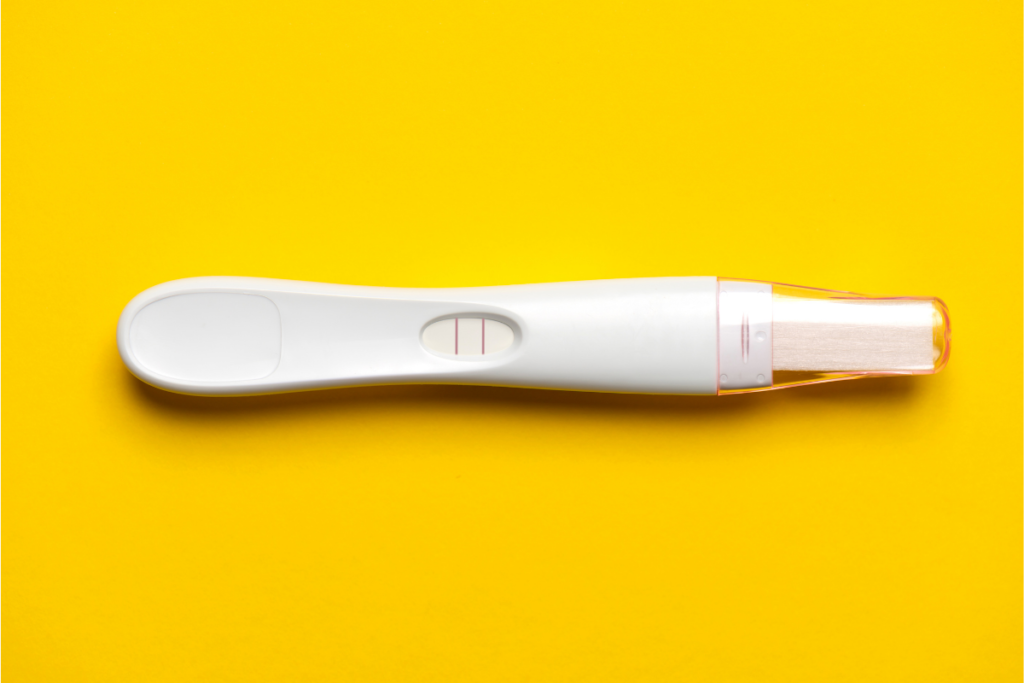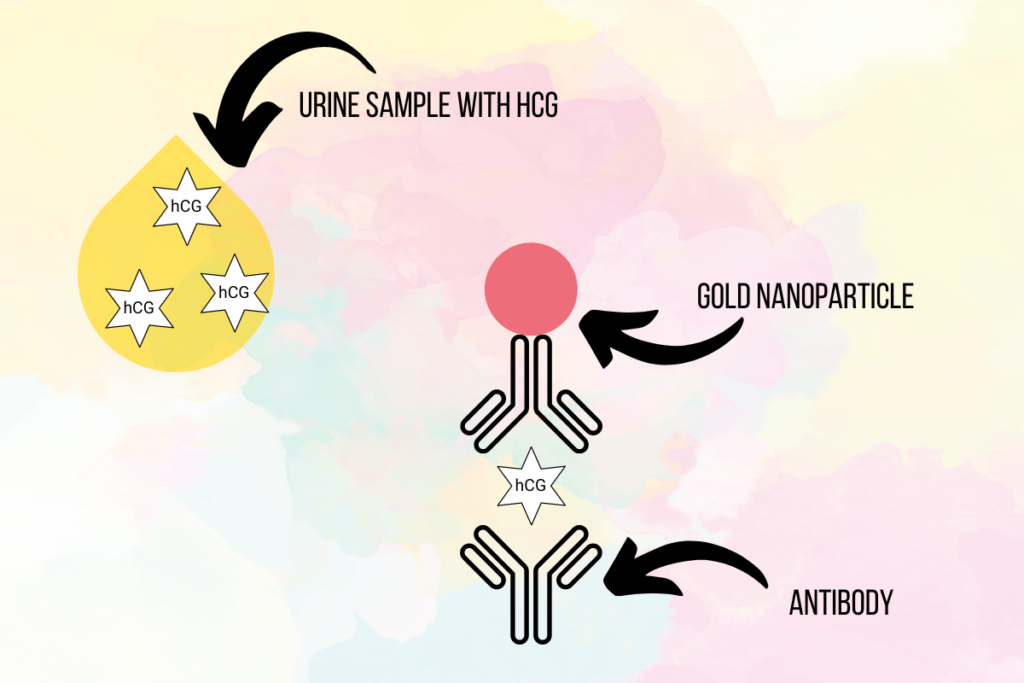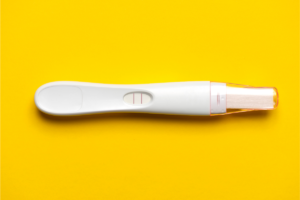Inside a Pregnancy Test: How Does it Work Anyway?

I can still feel the cold tile under my feet as I see that second line turn pink. I shakily yelled my husband’s name from the bathroom, and just like that, our lives changed forever. It was the very beginning of our sleep-deprived and beautifully chaotic journey of parenthood.
I spent the last decade developing diagnostic tests similar to a pregnancy test but detecting different diseases or conditions, from measuring hormones in saliva to finding the bacteria that causes Lyme disease inside a tick. And like scientists all over the world, detecting COVID in a nasal swab.
It’s incredible what these tests can achieve, yet the technology seems pretty unknown outside of the diagnostic world. Pregnancy tests are in so many medicine cabinets, yet the mechanism for how it works doesn’t leave the lab. COVID tests are being distributed across the US so understanding the primary mechanism is more important than ever. You will better understand why you might get a false negative result or what a positive means.
Let’s Start with the Basics
Would you be surprised to know that the red line on a pregnancy test is made up of gold nanoparticles? You can change the optical properties of gold by changing their size and shape. When gold is super tiny (40nm) and spherical like the ones traditionally used in pregnancy tests, they are a bright red color.
Pregnancy tests are a type of lateral flow immunoassay. Lateral flow assays, also known as rapid tests, have had quite the spotlight during the pandemic. The rapid tests to detect COVID use the same technology and principle as a standard pregnancy test.
Pregnancy tests find a protein in your urine called hCG (human chorionic gonadotropin) that the placenta produces when you are pregnant. They find the hCG using antibodies that specifically bind to this protein. The line that you see is ‘striped’ with one antibody, and gold nanoparticles are attached to another antibody.

The Test Line – Where the Magic Happens
The test line shows up if you are pregnant, sometimes seen as a plus sign or a second parallel line. When the urine flows up the test strip, it interacts with two antibodies. One type of antibody is dried onto the test line, and the other is bound to a gold nanoparticle. If hCG is in your urine, both antibodies will bind to it and form a “sandwich.” The gold nanoparticle produces a visual signal, increasing intensity as more particles bind. The line is faint when you have less hCG and then darker as hCG increases.
If you take a pregnancy test before your body has enough hCG, you might get a negative result even if you are pregnant. If you take the test right when you wake up in the morning, your urine is more concentrated and will have a higher concentration of hCG. Throughout the day, you will drink water and dilute your sample down. When you have high concentrations of hCG (the longer you wait after your missed period), this won’t make a difference, and you will likely see a positive signal no matter when you take the test.
For pregnancy tests, false-positive results are a lot less likely than false negatives. No test is 100% accurate, but you are most likely pregnant if you see a positive test line. Even though I knew this, I still took about five tests before believing I was pregnant!
The Control Line
The control line is the line on the pregnancy test that you can see regardless of pregnancy. The control line contains an antibody that will bind to the antibody-gold nanoparticle, whether there is hCG in the system or not. If you do not see a control line, the test is invalid even if there is a test line (i.e., you cannot trust the results and should re-test).
This control line shows if the test worked correctly. The most common reasons this line wouldn’t show up are if you did not add enough urine or if there is a defect with the test strip itself. While this is controlled as much as possible during the manufacturing process, it is always possible.
Variations in Pregnancy Tests
You might be wondering why some pregnancy tests show a blue line, a plus sign, an electronic “pregnant” or “not pregnant,” or an estimate of how many weeks pregnant you are.
While gold nanoparticles are the original particles used to generate the visual signal, other particles show a different color, such as blue latex. You can also stripe the antibody in a plus sign instead of two parallel lines, but the concept is the same.
The pregnancy tests that provide the electronic readout contain technology inside each device that essentially “reads” the test line signal. The estimation for how many weeks pregnant you are is based on the intensity of that line.
Lateral flow assays can also be analyzed by small machines. These can be used in a doctor’s office or even your home. These are becoming increasingly popular, and many companies produce tests that can be analyzed from the camera on your phone.
So What?
Whether you want that second line to show up or not, taking a pregnancy test can be a life-changing moment. Understanding how the test functions can give you confidence in a time that seems so incredibly unknown.
The landscape is changing in the diagnostic world. People everywhere are running COVID tests inside their homes and are responsible for understanding the results and making decisions. Your future medicine cabinet may have a lot of other lateral flow tests that are not just for pregnancy or COVID. Understanding the primary mechanism and function can help you keep up with the evolving diagnostic landscape.
Lateral flow tests are also used for diagnostics in many third-world countries because they are inexpensive and easy to use. Proper implementation of diagnostics like these could help eradicate diseases that plague the world. Pretty cool, huh?





1 Response
[…] time between sex and a positive pregnancy test feels like an eternity – also known as the two-week wait. Understanding this mysterious time […]